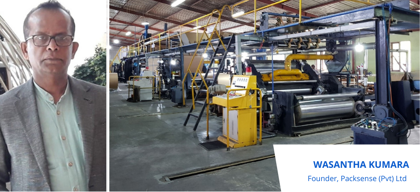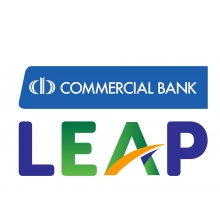9 sins in human resources transformation

රැකියා සහ මානව සම්පත්
සතියකට පෙර 190 — අවම 6 කියවීම
Change is the new normal. Human Resources (HR) is a vital function in every organisation and its leaders can't escape changes. They should lead changes in HR and the broader organisation. To cope with the requirements, you may be required to tweak your HR operations. Leading and learning from projects have led me to summarise the 'sins' in HR during project management, change management, design thinking.
1. Treating higher-skilled job transitions, same as transactional transactions
Not all HR jobs are completely standard operating procedure (SOP) or rule-based, e.g., recruitment/ talent acquisition and transitioning them from insourcing to outsourcing, onshore to offshore they need to be treated separately; different transition and handover plans are required. Along with traditional knowledge transfer methods (e.g., classroom training) live shadowing becomes essential. It is also necessary to attach recruiter to recruiter old to new, to gain tacit knowledge. 1-on-1 handover sessions between the two recruiters, hiring leaders should also not be ignored.
Also read: Managing change & transitions: Adapt boldly, nimbly, quickly
2. Ignoring change management, and employee feedback in the design
You can implement the best of the breed tools or policies; however, you would have failed if the adoption is low. Managing change to ensure the acceptability of change is essential. One way to ensure higher acceptance is the inclusion of users in the design of the solution.
3. Using internal HR language for policy intranets, employee/ manager self-service portals
Many early HR ESS/MSS portal creation have failed or have needed change. The old HR form was converted into a digital format. The form that was earlier 90% time being filled by HR personnel has been digitised, and the employee/leader is expected to fill it. Same for the policy which was available with HR and to share with the employee with specific interpretation has now been uploaded on to intranet in the same HR/legal language. Best practice would be writing the actual text on the intranet, in more regular language with the policy attached.
4. Doing frequent organisation changes
It takes several years for organisational models to percolate, be understood at least a couple of years for organisation structure to settle. Too frequent changes are a waste of energy, create ambiguity and a high sense of insecurity all of which doesn’t help productivity.
5. Undermining the importance of HR spending time to understand business
My belief is in many organisations. HR has moved on to be partner, enabler function (finance still needs to catch up) even, HR's knowledge of the business can be further improved. A suggestion would be the rotation of team leaders. An operations team manager in HR would bring in a fresh operational perspective and take back an understanding of HR work intricacies and vice versa for an HR manager in an operations role, where feasible. In the end, it’s the general business conditions that drive things and not vice-versa.
Also read: 5 ways technology can simplify HR, save time & reduce stress
6. Drafting and marketing EVPs (employee value propositions) and then forgetting about them
The right HR person would draft EVPs and work to ensure that they continue to be accurate, well past the start of the company stage. It is necessary to review the EVPs continuously and bring them up for consideration for each policy change. As the employee profile changes, a change in EVP would be warranted. One has seen that the change would be made in various areas, such as sourcing strategies, without the difference in the actual document, which reduces EVPs' usability for other changes.
7. Deciding metrics only based on feasibility rather than balancing with desirability
Often, metrics are decided based on feasibility - how long would it take us (HR) to do this, given a specific volume and certain staff strength, rather than the right balance between what the employee wants and what we can deliver. E.g., do we need the same hiring cycle time metric for all types of roles? Do averages matter to the hiring leader who had to interview five candidates to hire an entry-level employee.
8. Deciding projects value/benefit solely based on cost metrics (viability)
Many HR projects have impacts that are not measurable at least not cost-wise, which doesn't mean they shouldn't be done. HR projects measured against core revenue project isn't ok and create onus on the leaders to make sure they are fully endorsed.
9. Adopting an inside out approach
You must know what employees want, you must empathise and understand what they need and how. HR personnels are also employees. However, they have inside knowledge of policies, processes, jargon - so it doesn't make them the best user testers/feedback providers.
The above 'sins' relate to several areas such as project management, change management, design thinking.
Also read: Workforce management for SMEs: Challenges & solutions
To explore business opportunities, link with me by clicking on the 'Connect' button on my eBiz Card.
Image source: shutterstock.com
Disclaimer: The views and opinions expressed in this article are those of the author and do not necessarily reflect the views, official policy, or position of GlobalLinker
විසින් පළ කරන ලදී
Shishir ShrimalProblem solving, disruptive innovation for Organisations - using a blend of Design Thinking, Lean Six Sigma etal. Project Management Maturity assessment.
Shishir ගේ පැතිකඩ බලන්න
SME අභිප්රෙරකයන්
මේ සතියේ වැඩිපුරම කියෙව්වේ
ප්රවණතා
Leadership & Management සතියකට පෙර 16












අදහස්
කරුණාකර ඇතුල් වන්න හෝ ලියාපදිංචි කරන්න සාකච්ඡාවට එක්වීමට